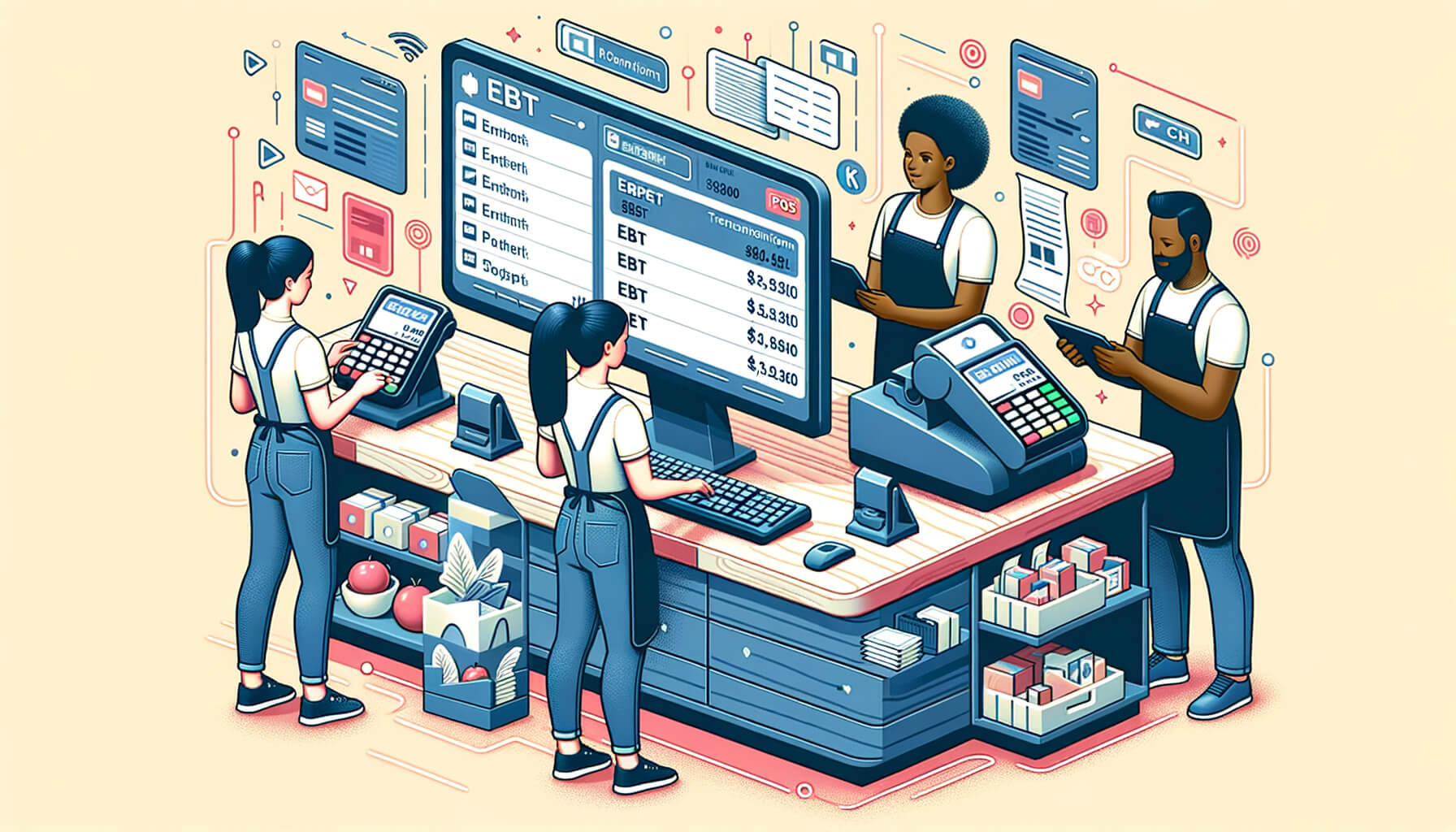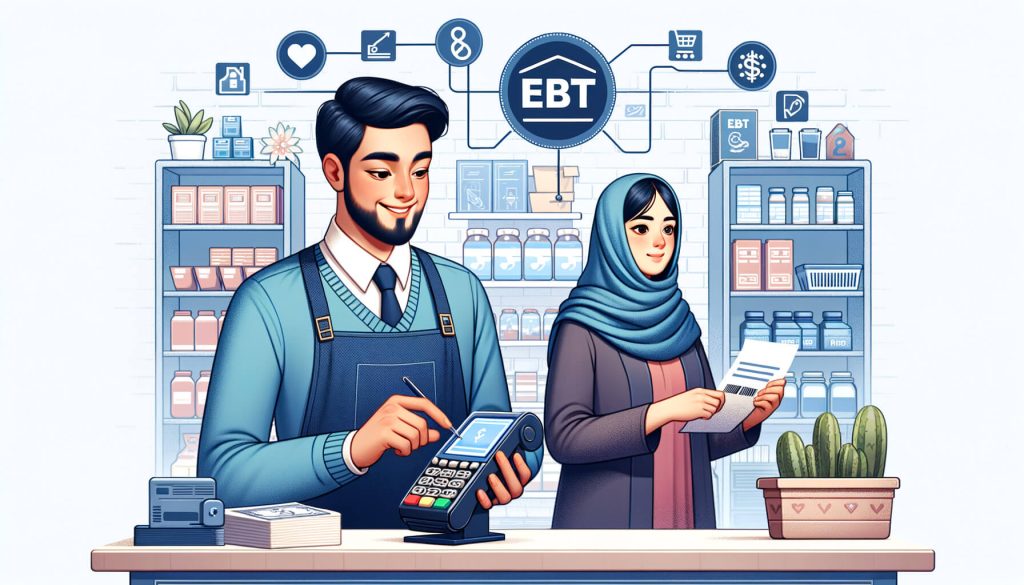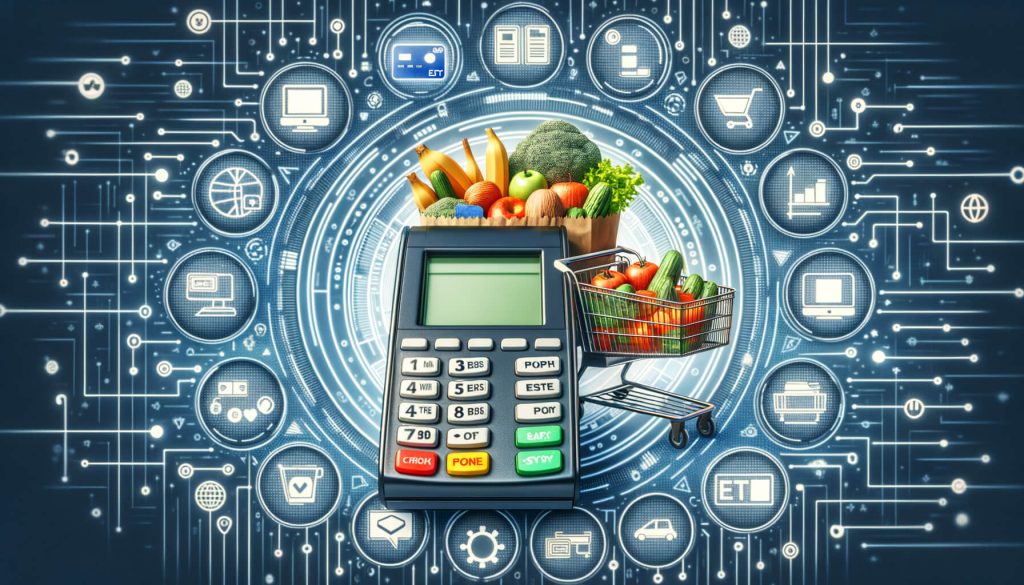
By manoj November 5, 2024
Electronic Benefit Transfer (EBT) is a system that allows recipients of government assistance programs, such as the Supplemental Nutrition Assistance Program (SNAP), to access their benefits through a debit card. EBT transactions are an essential part of many businesses, particularly those in the retail and grocery industries. Understanding how to manage EBT transactions with your point of sale (POS) system is crucial for ensuring a smooth and efficient process.
EBT transactions play a vital role in providing access to nutritious food for low-income individuals and families. According to the United States Department of Agriculture (USDA), over 42 million people in the United States relied on SNAP benefits in 2020. Accepting EBT payments not only helps these individuals access essential items but also benefits businesses by expanding their customer base and increasing sales.
Why EBT Management is Important for Retailers

Efficiently managing EBT transactions is critical for retailers who accept SNAP (Supplemental Nutrition Assistance Program) and WIC (Women, Infants, and Children) benefits. EBT management allows retailers to cater to low-income families, providing them access to essential groceries. Proper handling of EBT transactions also ensures compliance with government regulations, minimizing errors, enhancing the customer experience, and maintaining a positive brand image.
Using a POS system optimized for EBT transactions streamlines operations and improves transaction accuracy. This guide will cover the necessary steps to integrate EBT with your POS system, train your staff effectively, troubleshoot common issues, and adopt best practices. By mastering these aspects, retailers can provide a smooth and inclusive shopping experience for all customers.
The Benefits of Accepting EBT Payments

Accepting EBT payments can bring several benefits to businesses. Firstly, it allows retailers to tap into a significant market segment. By accepting EBT payments, businesses can attract customers who rely on government assistance programs, thereby increasing foot traffic and sales. Additionally, accepting EBT payments can enhance customer loyalty and satisfaction, as it provides a convenient and dignified way for individuals to access their benefits.
Furthermore, accepting EBT payments can help businesses comply with federal regulations. The USDA requires authorized retailers to accept EBT payments if they meet certain criteria, such as selling staple food items. By accepting EBT payments, businesses can ensure compliance and avoid potential penalties or loss of eligibility for other government programs.
Understanding EBT and How It Integrates with POS Systems
Electronic Benefits Transfer (EBT) is a payment method used by individuals who receive government assistance to access benefits for essential purchases. Retailers must ensure their POS system is EBT-compatible to process these transactions accurately and compliantly.
Key Differences Between EBT and Regular Card Transactions
EBT differs from regular debit or credit card payments in that it restricts purchases to eligible items, requires a PIN, and has specific regulatory requirements. EBT transactions can only be used to buy approved products such as groceries, with restrictions on items like alcohol, tobacco, and non-food items. This section will outline these differences and how they affect POS settings and procedures.
Role of POS Systems in EBT Management
POS systems play a critical role in processing EBT payments by identifying eligible items and enforcing program restrictions automatically. An effective POS system must separate SNAP-eligible purchases from ineligible items and support split payments when a customer buys both. This functionality ensures compliance and provides a reliable system for tracking EBT transactions.
Choosing the Right POS System for EBT Transactions

Selecting the right POS system is crucial for effectively managing EBT transactions. When choosing a POS system for EBT transactions, consider the following factors:
- EBT Integration: Ensure that the POS system you choose has built-in EBT integration capabilities. This integration allows for seamless processing of EBT transactions, reducing the risk of errors and improving efficiency.
- Compliance: Verify that the POS system is compliant with USDA regulations for EBT transactions. It should support the necessary features, such as the ability to process SNAP and EBT cash transactions separately.
- Reporting and Analytics: Look for a POS system that provides comprehensive reporting and analytics features. This will allow you to track EBT sales, monitor inventory, and analyze customer behavior, enabling you to make data-driven decisions.
- Scalability: Consider the scalability of the POS system. As your business grows, you may need to process a higher volume of EBT transactions. Ensure that the POS system can handle increased demand without compromising performance.
- Customer Support: Evaluate the customer support offered by the POS system provider. Prompt and reliable support is essential for troubleshooting issues and ensuring smooth EBT transaction processing.
Setting Up Your POS System for EBT Transactions
Once you have chosen a suitable POS system, it is essential to set it up correctly for EBT transactions. Follow these steps to ensure a smooth setup process:
- Obtain EBT Authorization: Before setting up your POS system for EBT transactions, you must obtain authorization from the USDA. Contact your state’s EBT program office to initiate the authorization process.
- Configure EBT Settings: Access the settings menu of your POS system and configure the EBT settings. This includes entering your EBT authorization number, selecting the appropriate EBT program, and setting up any required PIN pad integration.
- Train Staff: Provide comprehensive training to your staff on how to process EBT transactions using the POS system. Ensure they understand the specific steps involved, such as swiping the EBT card, entering the PIN, and separating SNAP and EBT cash transactions.
- Test EBT Transactions: Conduct test transactions to ensure that the POS system is correctly set up for EBT processing. This will help identify any issues or errors before actual EBT transactions take place.
Processing EBT Transactions: Best Practices
To effectively manage EBT transactions with your POS system, it is essential to follow best practices. Consider the following tips:
- Train Staff on EBT Policies: Ensure that your staff is familiar with the policies and regulations surrounding EBT transactions. This includes understanding eligible items, transaction limits, and prohibited activities.
- Separate SNAP and EBT Cash Transactions: Process SNAP and EBT cash transactions separately to comply with USDA regulations. This ensures accurate reporting and prevents misuse of benefits.
- Provide Clear Instructions to Customers: Display clear instructions at the point of sale to guide customers on how to use their EBT cards. This includes instructions on swiping the card, entering the PIN, and selecting the appropriate payment option.
- Maintain Transaction Records: Keep detailed records of EBT transactions, including the date, time, amount, and items purchased. This documentation is essential for compliance purposes and can help resolve any disputes or discrepancies.
- Regularly Update POS System Software: Stay up to date with the latest software updates for your POS system. These updates often include bug fixes, security enhancements, and new features that can improve the EBT transaction process.
Troubleshooting Common Issues with EBT Transactions

Despite careful setup and adherence to best practices, issues with EBT transactions may still arise. Here are some common issues and their potential solutions:
- Card Declined: If an EBT card is declined, ensure that the card is not expired and that the customer has sufficient funds available. If the issue persists, contact the EBT program office for assistance.
- Invalid PIN: If a customer enters an invalid PIN, instruct them to try again. If the issue persists, advise them to contact the EBT program office to reset their PIN.
- Connectivity Problems: If your POS system experiences connectivity issues during an EBT transaction, ensure that your internet connection is stable. If the problem persists, contact your POS system provider for technical support.
- Transaction Errors: If a transaction error occurs, such as an incorrect amount charged or an item not eligible for EBT payment, promptly address the issue with the customer. Offer a refund or alternative payment method if necessary.
Maximizing Efficiency with EBT Transactions
To maximize efficiency when managing EBT transactions with your POS system, consider the following strategies:
- Optimize Checkout Process: Streamline the checkout process to minimize waiting times for customers. Ensure that your POS system is fast and responsive, and train staff to efficiently process EBT transactions.
- Use Barcode Scanners: Utilize barcode scanners to expedite the scanning process. This reduces the risk of errors and speeds up the transaction, improving overall efficiency.
- Implement Self-Checkout Options: Consider implementing self-checkout options for customers. This allows them to complete EBT transactions independently, reducing the workload on staff and increasing overall efficiency.
- Leverage Mobile POS Solutions: Explore the use of mobile POS solutions, such as tablets or smartphones, to process EBT transactions. This provides flexibility and allows staff to assist customers anywhere in the store, further enhancing efficiency.
Ensuring Security and Compliance with EBT Transactions
Security and compliance are paramount when managing EBT transactions. Follow these measures to ensure the security and compliance of your EBT transactions:
- Secure POS System Access: Implement strong password policies and restrict access to the POS system to authorized personnel only. Regularly update passwords and revoke access for former employees.
- Encrypt EBT Data: Ensure that all EBT data transmitted between the POS system and the EBT processor is encrypted. This protects sensitive information from unauthorized access or interception.
- Regularly Monitor Transactions: Regularly review EBT transaction logs and reports to identify any suspicious activity or anomalies. Promptly investigate and report any potential security breaches or fraudulent transactions.
- Comply with PCI DSS Standards: Adhere to the Payment Card Industry Data Security Standard (PCI DSS) requirements to protect cardholder data. This includes maintaining a secure network, regularly monitoring and testing systems, and implementing strong access control measures.
Training Your Staff for EBT Transactions
Properly training your staff is crucial for effectively managing EBT transactions. Consider the following training tips:
- Provide Comprehensive EBT Training: Offer thorough training on EBT policies, regulations, and procedures. Ensure that your staff understands the importance of accurate transaction processing and compliance with USDA guidelines.
- Conduct Regular Refresher Training: Schedule regular refresher training sessions to reinforce EBT transaction procedures and address any questions or concerns. This helps maintain staff proficiency and ensures consistent adherence to best practices.
- Foster Customer Service Skills: Emphasize the importance of excellent customer service when processing EBT transactions. Train staff to be patient, respectful, and knowledgeable when assisting customers with EBT payments.
- Stay Updated on Policy Changes: Keep your staff informed about any changes to EBT policies or regulations. This can be achieved through regular communication, staff meetings, or training sessions.
Optimizing Your POS System for EBT Transactions
Optimizing your POS system enhances EBT functionality, improves transaction speed, and ensures compliance with regulatory updates.
Updating POS Software for Enhanced EBT Management
Regular software updates are essential for maintaining EBT compatibility. Updates may introduce new features, address security vulnerabilities, and reflect changes in EBT regulations. Scheduling updates during non-peak hours helps minimize disruptions and keep your system up-to-date.
Integrating EBT with Other Payment Methods
Some customers use multiple payment methods, such as EBT with cash or credit. Your POS system should be capable of handling split payments to ensure flexibility. Integration with additional payment options improves the checkout experience for customers and streamlines transaction processing.
H3: Frequently Asked Questions (FAQs)
Q1: Can all businesses accept EBT payments?
No, only authorized retailers that meet specific criteria can accept EBT payments. These criteria include selling eligible food items and complying with USDA regulations.
Q2: Can EBT benefits be used to purchase non-food items?
No, EBT benefits can only be used to purchase eligible food items. Non-food items, such as alcohol, tobacco, and pet food, are generally not eligible for EBT payment.
Q3: Can EBT benefits be used for online purchases?
Yes, some states allow EBT benefits to be used for online purchases through approved retailers. However, not all states have implemented this option, so it is essential to check with your state’s EBT program office.
Q4: Can EBT benefits be used to pay for delivery or service fees?
No, EBT benefits cannot be used to pay for delivery or service fees. These fees must be paid separately using another form of payment.
Q5: Can EBT benefits be withdrawn as cash?
Yes, EBT cash benefits can be withdrawn as cash from ATMs or received as cash back at authorized retailers. However, SNAP benefits can only be used to purchase eligible food items.
Conclusion
Managing EBT transactions with your POS system is essential for businesses that accept government assistance program benefits. By understanding the importance of EBT transactions, choosing the right POS system, setting it up correctly, and following best practices, businesses can efficiently process EBT transactions while ensuring compliance and security.
Training staff, troubleshooting common issues, and maximizing efficiency further contribute to a smooth and successful EBT transaction process. By embracing EBT transactions, businesses can not only expand their customer base but also contribute to providing access to nutritious food for low-income individuals and families.